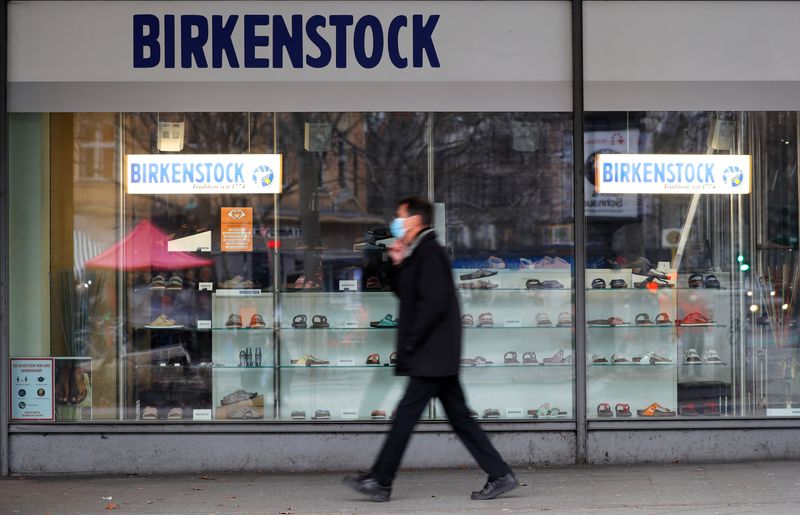Birkenstock Holding (NYSE:BIRK) saw its shares surge more than 12% at the market open Thursday after the German shoemaker reported Q2 earnings and revenue that beat analyst expectations and raised full-year guidance.
The company’s earnings per share (EPS) in the quarter came in at EUR 0.38, topping the analyst estimates of EUR 0.35. Revenue rose to EUR 481.2 million, also above the consensus projection of EUR 465.4 million.
Birkenstock’s adjusted EBITDA was reported at EUR 162.3 million, beating the EUR 145.8 million expected by analysts.
Most notably, Birkenstock has revised its FY2024 revenue forecast to EUR 1.77-1.78 billion, compared to the consensus estimate of EUR 1.75 billion. The new revenue forecast projects year-over-year growth of 20% up from the previous guidance range of 17%-18%.
Moreover, Birkenstock now expects 2024 adjusted EBITDA to be in the range of EUR 535 million-545 million, an increase from the prior guidance of EUR 520 million-530 million.
The company also reiterated its medium to long-term profitability goals, aiming for a gross profit margin of around 60% and an adjusted EBITDA margin exceeding 30%.
"We’re encouraged to see a guidance increase heading into peak season, suggesting demand remains
high, and reflecting the company’s confidence that its new production facilities are starting to ramp to fulfill its growth aspirations," analysts at Evercore ISI commented in a post-earnings note.
"With high structural margins to defend the P&L from any macro pressure that may emerge—and 220bp of front
loaded investment in the GM & EBITDA margin in 2Q related to the new production facilities, F2Q is a good proof-point that BIRK should be able to deliver a solid combination of growth plus expanding margins algo for several years."
Meanwhile, given that this is BIRK's first fiscal Q2 print, analysts at Goldman Sachs said they expect some variations in the quarterly results compared to consensus expectations "as the market learns more about the phasing of investment across the year, particularly given the seasonality of the business."
